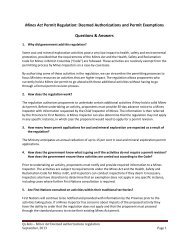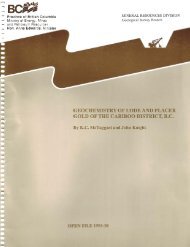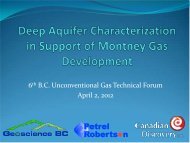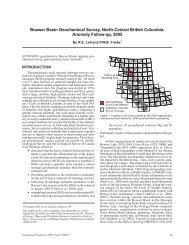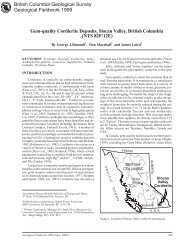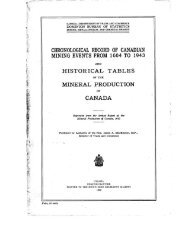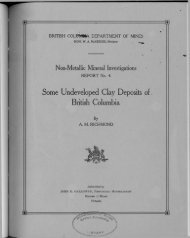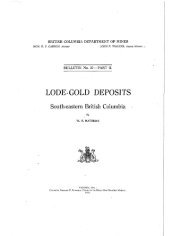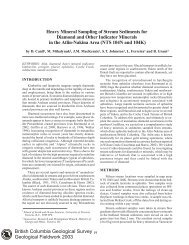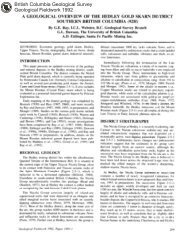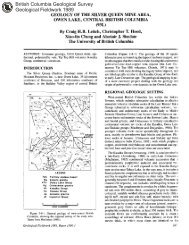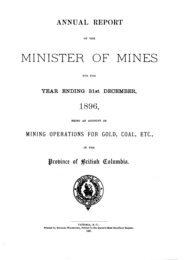PDF version - Ministry of Energy, Mines and Natural Gas
PDF version - Ministry of Energy, Mines and Natural Gas
PDF version - Ministry of Energy, Mines and Natural Gas
Create successful ePaper yourself
Turn your PDF publications into a flip-book with our unique Google optimized e-Paper software.
Mineral Occurrence<br />
MINFILE Coding Manual<br />
Mineral Occurrence<br />
4. MINERAL OCCURRENCE<br />
4.1 Commodities<br />
4.2 Mineralogy<br />
4.2.1 Comments - Mineralogy<br />
4.3 Alteration Type<br />
4.4 Deposit Character<br />
4.5 Deposit Classification<br />
4.6 Deposit Type<br />
4.7 Age <strong>of</strong> Mineralization<br />
4.8 Isotopic Age<br />
4.9 Material Dated<br />
4.10 Dating Method<br />
4.11 Deposit Configuration<br />
4.11.1 Shape<br />
4.11.2 Shape Modifier<br />
4.11.3 Deposit Dimension<br />
4.12 Attitude<br />
4.13 Comments - Structural <strong>and</strong> Age<br />
When coding online select the options from the corresponding list boxes.<br />
Online help is also available from the MINFILE/www online coding card.<br />
4.1 COMMODITIES(*) (R19) (E19)<br />
The commodity fields are used to identify the presence <strong>of</strong> an element or substance <strong>of</strong> economic<br />
potential or interest. The commodities present in the mineral occurrence are to be listed, in decreasing<br />
order <strong>of</strong> importance, based on economic significance. The commodity may be present in any amount<br />
<strong>and</strong> it is not the prerogative <strong>of</strong> the individual coder to identify commodities based on economic or<br />
quantitative criteria. Commodities produced as an economic product from mining activities are identified<br />
in the Production <strong>and</strong> Inventory portion <strong>of</strong> the database. The commodities identified in the Inventory/<br />
Production portions MUST be included in the commodities list for the occurrence. The database will<br />
accept up to 15 different commodities per occurrence. Listed commodities should normally have a<br />
corresponding mineral in the significant mineral category.<br />
The search codes for commodities consist <strong>of</strong> two-character st<strong>and</strong>ard elemental chemical symbols or twocharacter<br />
codes made up for industrial minerals <strong>and</strong> other commodities. Appendix II contains a<br />
complete listing <strong>of</strong> the current commodity search codes. New codes may be added to the master table if<br />
required.<br />
Examples: AU=gold, PT=platinum, LS=limestone, JD=jade<br />
Appendix VIII is a glossary <strong>of</strong> historic <strong>and</strong> equivalent mineral names <strong>and</strong> should be used to identify<br />
equivalent names or synonyms for the commodities.<br />
4.2 MINERALOGY(*) (R20) (E20a,b)<br />
file:///C|/HardcopyManual/05_codemino.htm (1 <strong>of</strong> 10)2007-09-20 4:09:05 PM



